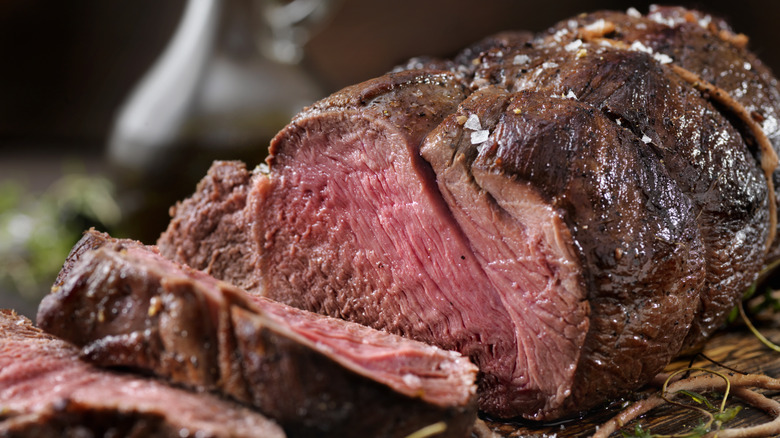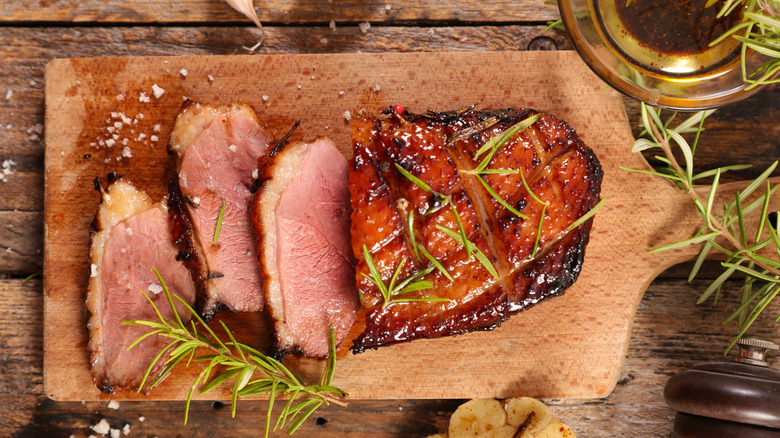The Best Meats To Roast Using The Combination Method
The combination method of cooking meats uses a two-step technique, a blast of hot and high heat and a dose of low and slow heat. When to blast and when to dose are interchangeable — you can start off with a piping hot sear and finish off at a low temperature in the oven, or you can start off with a cold pan and wrap things up with a burst of high heat. Other times you just switch the dial on your oven at a certain point during the roasting time. Which step heat you use first depends on what you are cooking.
The purpose of the combination method is to trigger the Maillard reaction, which will brown the meat's exterior and enhance its flavor while ensuring the center of the meat cooks through and remains juicy. Taking the time to adjust your cooking temperatures in line with the combination method is worth it. Everything from beef and pork to lamb and chicken can be elevated with a simple temperature about-face.
When should you use the combination method
The best meats to cook using this technique are those you would typically roast at a low temperature for a long period of time for tenderness that would benefit from a nice brown on the surface – think tenderloin, sirloin, prime rib, rump roasts, pork loin, or lamb racks. The most common way to achieve this is to sear the meat on the stovetop and then transfer it to the oven to finish cooking. This method is often the gold standard in restaurant kitchens and is perfect for achieving crispy chicken skin.
You can also start some meats in the oven and finish with a flash in a hot pan on the stovetop to get a crust (aka a reverse sear), which works well with steaks. For larger cuts of meat, or if you don't want to deal with the stovetop, you can start off cooking your meat in a hot oven at 500 degrees Fahrenheit for a short period, and then lower the temperature until the meat cooks through. Alternatively, you can cook your cut low and slow in the oven, but finish everything off with a little broiling to brown your roast.
While they seem similar to chicken, duck and goose breasts need a slightly different approach due to their fattiness. Instead, start duck and goose breasts in a cold pan and slowly bring it to temperature over low heat to allow the fat to render while the meat slowly cooks to perfection and the skin crisps up. But this is a rare and notable exception; for so many other cuts of meat, the combination method is a foolproof technique for a delicious dinner.

